

GENERAL INFORMATION AND CALL FOR APPLICATIONS
General
Cost Action TU1404 invites researchers to submit proposals for Short Term Scientific Missions (STSM). Applications from Early Stage Researchers (ESR) are particularly encouraged.
Short Term Scientific Missions (STSM) are aimed at supporting individual mobility, strengthening the existing networks and fostering collaborations by allowing scientists to visit an institution or laboratory in an eligible country, namely: another Participating COST Country, an approved COST Near Neighbour Country (NNC) or an approved International Partners Country (IPC).
A STSM should specifically contribute to the scientific objectives of the COST Action TU1404, while at the same time allowing applicants to learn new techniques or gain access to specific instruments and/or methods not available in their own institutions.
The selection of applicants is based on the scientific scope of the STSM application that must be in line with the Action objectives.
The Applicant
STSM applicants must be engaged in a research programme as a postgraduate student or postdoctoral fellow, or be employed by or officially affiliated to an institution or legal entity. This institution is considered as the Home institution. Institutions may be public or private entities.
All COST TU1404 members and their students/colleagues involved in WG activities are invited to submit one or more STSM applications.
The applications should be submitted in response to permanently open call issued by the COST Action TU1404 STSM Committee.
Call for Applications
Call opening: 15 January 2015 Call status: Permanently open call (number of STSMs granted per year is limited by available funds) Decision and notification: Continuously (for applications received by 1st of each month, evaluation results will be available by 15th of the subsequent month).Annex documents:
Guide for Applicants Annexes (templates in MSWord format) COST Vademecum Part 1After the STSM
The grantee is required to submit a short scientific report to the host institution (for information) and to the STSM Committee for approval within 30 days after the end date of the STSM.
Payment
Payment of the grant will be issued only after receipt of the approval that the STSM has been successfully accomplished.
Contact
COST Action TU1404 STSM Coordinator: Prof. Violeta Bokan Bosiljkov ( violeta.bokan-bosiljkov@fgg.uni-lj.si)AWARDED STSM´S
INFORMATION REGARDING PROCESS OF THE “BEST STSM AWARD – JANUARY 2015 TO APRIL 2016”
Within the COST TU1404 action there were eight STSMs finished by the end of April 2016. In May 2016 a call for the best STSM award for the period January 2015 to April 2016 was launched by STSM Committee members.
PhD students and early stage researchers who had successfully finished STSM by April 2016 were directly addressed to prepare posters in order to present the most important outcomes of their research work and publications, which have resulted or will result from the research within the STSM.
By the deadline for the submission of the posters (20 June 2016) the STSM Committee received five posters (out of eight) that underwent evaluation process, together with the scientific reports resulting from each STSM.
The STSM Committee decided to grant awards in two categories – best STSM of an Early Stage Researcher and best STSM of a PhD Student.
Elke GRUYAERT
Won the award for the best Short Term Scientific Mission of an Early Stage Researcher
Ahmed Zakarya BENDIMERAD
Won the award for the best Short Term Scientific Mission of a PhD student.
The announcement of the best STSMs was during the COST TU 1404 conference “Service life of cement-based materials and structures” in Denmark (August 2016). The best STSM is directly entitled to financial support for all COST meetings within 1 year after the attribution of the award.
Violeta Bokan Bosiljkov COST Action TU1404 STSM Coordinator
Annex documents:
TU1404_STSM AWARD TU1404_POSTER_AZ TU1404_POSTER_Elke GruyaertINFORMATION REGARDING THE PROCESS OF PRESENTING THE “BEST STSM AWARD – MAI 2016 TO AUGUST 2017”
Seven STSMs were finished within the COST TU1404 action in the period between Mai 2016 and August 2017. Scientific reports which were previously approved by the STSM Committee members (using the regular evaluation process) were evaluated again in August 2017, in order to rank them and to grant awards in two categories - best STSM of an Early Stage Researcher and best STSM of a PhD Student.
Jérôme CARETTE
Won the award for the best Short Term Scientific Mission of an Early Stage Researcher
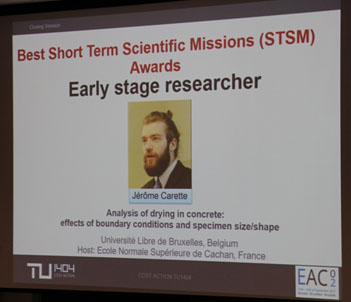
Luise GÖBEL
Won the award for the best Short Term Scientific Mission of a PhD student

The winning STSMs were announced during the “Early Age Cracking and Serviceability in Cement-based Materials and Structures” conference that was co-organised by the COST TU 1404. Winning STSMs are directly entitled to financial support for all COST meetings within 1 year after the attribution of the award.
Violeta Bokan Bosiljkov COST Action TU1404 STSM Coordinator1st STSM approved on 15th of February 2015
 José Granja
University of Minho, Guimarães (PT)
STSM Topic:Characterization of cement-based materials: experimental analysis and micro-mechanics modeling
Host: Cyrille Dunant, École polytechnique fédérale de Lausanne, Lausanne (CH)
Period: 01.02.2015 to 30.04.2015
Budget: 2.500€
Work Plan Summary:
José Granja
University of Minho, Guimarães (PT)
STSM Topic:Characterization of cement-based materials: experimental analysis and micro-mechanics modeling
Host: Cyrille Dunant, École polytechnique fédérale de Lausanne, Lausanne (CH)
Period: 01.02.2015 to 30.04.2015
Budget: 2.500€
Work Plan Summary:
The long-term structural performance and durability of cement-based structural elements is strongly influenced by curing conditions and early age events (thermal cracking, scaffolding removal, loadings). Hence, the capacity of characterizing and/or simulation the evolution of mechanical properties, such as E-modulus, since casting assumes crucial importance. This mission aims to create a bridge between the experimental and numerical research, through the implementation of a new experimental method, the EMM-ARM, capable of estimate the E-Modulus of a cement paste since mixing. During this mission the applicant pretends to: implement the EMM-ARM method at the Laboratoire de Matériaux de Construction at École polytechnique fédérale de Lausanne; perform a comprehensive experimental program to characterize the physical properties of several cement pastes in order to compare the results obtained by several experimental methodologies, including the EMM-ARM. With the results obtained it will be possible to perform an additional validation and to disseminate the EMM-ARM methodology; and simulate de E-Modulus of the same cement pastes studied in the previous point and compare the results with the experimental data obtained in order to eventually validate and/or highlight the strengths and the limitations of the model used.
2nd STSM approved on 15th of February 2015
 Ahmed Zakarya BENDIMERAD
Ecole Centrale de Nantes, Nantes (FR)
STSM Topic:Early age behaviour of recycled concrete
Host: Stéphanie STAQUET, Université Libre de Bruxelles ULB, Bruxelles (BE)
Period: 31.08.2015 to 30.10.2015
Budget: 2.500€
Work Plan Summary:
Ahmed Zakarya BENDIMERAD
Ecole Centrale de Nantes, Nantes (FR)
STSM Topic:Early age behaviour of recycled concrete
Host: Stéphanie STAQUET, Université Libre de Bruxelles ULB, Bruxelles (BE)
Period: 31.08.2015 to 30.10.2015
Budget: 2.500€
Work Plan Summary:
The use of construction waste obtained from building demolition as aggregates for the production of new concrete has become more common for the last decade. It is actually a promising way to handle construction waste and reduce the depletion of nonrenewable resources. The French National Projects RECYBETON and ECOREB aims at developing recommendations for the use of recycled aggregates in building materials. The experimental study performed in my PhD deals with the early-age behaviour of recycled concrete. The main objective is to assess the risk of cracking induced by plastic shrinkage. All the tests performed in the home laboratory (GeM) allowed me to understand major parameters of recycled concrete such as elastic properties, plastic shrinkage and tensile strength. This STSM will have a benefit for me to valorise the experimental work done in the framework of my PhD in Nantes and provide the scientific community with a comprehensive study on the risk of cracking of recycled concrete at early age. The goal of the STSM is actually to use the Temperature Stress Testing Machine (TSTM) device developed at ULB and combine the monitoring of the properties of recycled concrete at very early age. Since 2007 GeM-Centrale Nantes and BATir-ULB laboratories have developed a collaboration involving several PhD students and researchers to develop experimental studies on innovative cement-based materials and benchmarks on advanced tests. The STSM is an opportunity to valorise existing studies on recycled concrete at GeM and TSTM device at BATir.
3rd STSM approved on 15th of March 2015
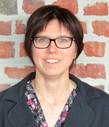 Dr Elke Gruyaert
Magnel Laboratory for Concrete Research, Ghent (BE)
STSM Topic:Microstructural characterization of self-healed cement based materials
Host: Denis Damidot, Ecole des Mines de Douai, Douai (FR)
Period: 07.04.2015 to 07.05.2015
Budget: 1.600€
Work Plan Summary:
Dr Elke Gruyaert
Magnel Laboratory for Concrete Research, Ghent (BE)
STSM Topic:Microstructural characterization of self-healed cement based materials
Host: Denis Damidot, Ecole des Mines de Douai, Douai (FR)
Period: 07.04.2015 to 07.05.2015
Budget: 1.600€
Work Plan Summary:
Concrete has the intrinsic capacity to heal autogenously, mainly by hydration of unhydrated cement particles and dissolution and subsequent carbonation of Ca(OH)2. Since these mechanisms are rather slow, researchers are looking to incorporate (encapsulated) healing agents in the concrete in such a way that cracking is a trigger to activate the autonomous healing mechanism. The aim of this study is to perform some more fundamental research with regard to characteristics of the healing agents and their interaction with crack faces. Moreover, also the effect on durability issues will be considered. In detail, we will study:
(i) the growth of CaCO3 or hydration products precipitated in the crack and at the interface and their mechanical properties in the case of autogenous healing and autonomous healing by incorporation of super absorbent polymers or bacteria (technique used: SEM in combination with nanoindentation) (ii) the mechanical properties and elasticity of polymeric healing agents, their bonding with the concrete matrix and their failure mode (technique used: tensile testing in combination with SEM) (iii) the capacity of self-healing to limit/prevent the ingress of chlorides in concrete and thus to increase the service life (technique used: EPMA and SEM).
4th STSM approved on 15th of July 2015
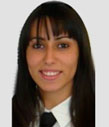 Ms María Mirian Velay Lizancos
University of Coruña, Coruña (ES)
STSM Topic:Advanced studies of early hydration kinetics of eco-concretes made of locally available biomass ashes
Host: Miguel Azenha, Institute for Sustainability and Innovation in Structural Engineering (ISISE), University of Minho, Guimaraes (PT)
Period: 01.07.2015 to 15.08.2015
Budget: 1.800€
Work Plan Summary:
Ms María Mirian Velay Lizancos
University of Coruña, Coruña (ES)
STSM Topic:Advanced studies of early hydration kinetics of eco-concretes made of locally available biomass ashes
Host: Miguel Azenha, Institute for Sustainability and Innovation in Structural Engineering (ISISE), University of Minho, Guimaraes (PT)
Period: 01.07.2015 to 15.08.2015
Budget: 1.800€
Work Plan Summary:
Study of the development at early ages of the modulus of elasticity of eco-concretes with biomass ashes coming from a paper factory. Thanks to the utilization of the EMM-ARM, it will be possible to observe the influence of the biomass ashes in that development. For this purpose, it will be performed an experimental campaign with three dosages under study; a reference dosage (conventional concrete) and two dosages with a 10% and 20% replacement of cement by biomass ashes (eco-concretes). Nowadays, no studies that monitor the development of the modulus of elasticity of eco-concretes with biomass ashes have been found. This study aims to make a comparative study of concretes with different replacements of biomass ashes.
From the point of sustainability, it has a double advantage. On the one hand, a waste product (biomass ashes) is transformed in a raw material and, on the other hand, the amount of cement utilized is reduced (the pollution caused by cement production is a factor that must be considered). Therefore, this concrete would be doubly an eco-material. Additionally, it will be useful to compare the methodology of the EMM-ARM with other methods such as ConSensor (conductivity) and/or ultrasonic. This STMS is an opportunity to develop a novel study about the properties of eco-concretes at early ages, make possible the collaboration and synergy among the members of the COST TU1404 and employ and compare techniques developed to estimate the modulus of elasticity at early ages.
5th STSM approved on 15th of July 2015
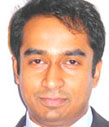 Dr Sreejith Nanukuttan
Queen`s University Belfast, Belfast (UK)
STSM Topic:Multi ionic modelling for geopolymer concretes
Host: Eduardus Koenders, TU-Darmstadt, Darmstadt (DE)
Period: 02.08.2015 to 18.09.2015
Budget: 2.490€
Work Plan Summary:
Dr Sreejith Nanukuttan
Queen`s University Belfast, Belfast (UK)
STSM Topic:Multi ionic modelling for geopolymer concretes
Host: Eduardus Koenders, TU-Darmstadt, Darmstadt (DE)
Period: 02.08.2015 to 18.09.2015
Budget: 2.490€
Work Plan Summary:
The objective of this STSM is to develop the numerical simulation skills to model chloride ion flow in multi ionic regime (Na, Si, S, K, OH, Ca) such as geopolymer or alkali activated systems. The proposer has prior testing expertise in geopolymer concrete and recently supervised a PhD project in the same topic. The host is world renowned expert in microstructural modelling. It is expected that the proposed scientific mission will help to identifying critical variables in geopolymer systems and develop a numerical model for chloride ion transport in multi-ionic systems. The same model can also be used in high volume replacement cementitious systems and is an essential tool in establishing the market for geopolymer concretes. The mission includes 2 weeks of in house placement at Technical University Darmstadt and followed by four weeks of consultation and regular meetings to ensure progress.
6th STSM approved on 15th of July 2015
 Mr Oles Lastivka
Scientific Research Institute for Binders and Materials, Kiev National University of Civil Engineering, Kyiv (UA)
STSM Topic:The study of structure and properties of concrete and choice of factors which affect service life
Host: Muhammed Basheer, University of Leeds, Leeds (UK)
Period: 01.09.2015 to 15.10.2015
Budget: 2.500
Work Plan Summary:
Mr Oles Lastivka
Scientific Research Institute for Binders and Materials, Kiev National University of Civil Engineering, Kyiv (UA)
STSM Topic:The study of structure and properties of concrete and choice of factors which affect service life
Host: Muhammed Basheer, University of Leeds, Leeds (UK)
Period: 01.09.2015 to 15.10.2015
Budget: 2.500
Work Plan Summary:
Study heat of hydration of the alkali-activated slag Portland cement and heat evolution of the concrete vs. contents of Portland cement clinker and slag constituents, type and content of the alkaline activator in the cement; Study deformation properties (shrinkage, creep) and performance (strength) properties of the alkali-activated slag Portland cement concrete in parallel with measuring of heat evolution of the concrete; Study thermo-stressed state of the alkali-activated slag Portland cement concrete and its crack resistance.
7th STSM approved on 6th of October 2015
 Mr Thomas Titscher
Federal Institute for Materials Research and Testing (BAM), Berlin(DE)
STSM Topic:Model reduction of concrete mesoscale simulations
Host: Xavier Oliver, Universitat Politècnica de Catalunya (UPC), Barcelona(ES)
Period: 05. 10. 2015 to 27. 11. 2015
Budget: 2500 Euro
Work Plan Summary:
Mr Thomas Titscher
Federal Institute for Materials Research and Testing (BAM), Berlin(DE)
STSM Topic:Model reduction of concrete mesoscale simulations
Host: Xavier Oliver, Universitat Politècnica de Catalunya (UPC), Barcelona(ES)
Period: 05. 10. 2015 to 27. 11. 2015
Budget: 2500 Euro
Work Plan Summary:
The complex macroscopic properties of concrete are substantially influenced by its heterogeneous structure. Instead of using complex, phenomenological motivated macroscopic formulations, the meso-structure of concrete is directly modeled. Concrete is simulated as a three-phase composite with aggregates, mortar matrix and interfacial transition zone. Only the recent advance in computer technology enables the simulation of complex multi-physics problems on multiple scales with realistic failure modes. The aim of this STSM is to apply a high-performance model reduction method to a concrete material model on the mesoscale to decrease the computational effort. This will be done in two steps. First, the numerous element shape functions are replaced by a few characteristic global ansatz functions. This drastically decreases the size of the resulting system of equations. In the second step, the computational costs of setting up these equations is reduced by only evaluating certain representative integration points. Methods for choosing the global ansatz functions and integration points will be investigated with respect to accuracy of the solution and the reachable computational speed-up.
8th STSM approved on 8th of February 2016
 Ms Wibke Hermerschmidt
Institute for Building Materials, Concrete Construction and Fire Protection (iBMB), Braunschweig (DE)
STSM Topic:Modelling of early age concrete creep with rheological modeling approaches
Host: Farid Benboudjema, ENS Cachan, Laboratoire de Mécanique et de Technologie, Cachan (FR)
Period: 15. 02. 2016 to 15. 03. 2016
Budget: 2000 Euro
Work Plan Summary:
Ms Wibke Hermerschmidt
Institute for Building Materials, Concrete Construction and Fire Protection (iBMB), Braunschweig (DE)
STSM Topic:Modelling of early age concrete creep with rheological modeling approaches
Host: Farid Benboudjema, ENS Cachan, Laboratoire de Mécanique et de Technologie, Cachan (FR)
Period: 15. 02. 2016 to 15. 03. 2016
Budget: 2000 Euro
Work Plan Summary:
The subject of this STSM is a detailed investigation of rheological modeling approaches for early age concrete creep. It aims at a better understanding and a more general description of this type of modeling approaches, particularly with regard to their validity for different stress-strain histories and the description of the influence of the hardening state and the temperature. Furthermore, creep data of various concrete mixes will be used for calibrating the models. From the comparison of the resulting model parameters, suggestions and restrictions for their general description can be derived. These investigations make an important contribution to the further development of rheological models for the description of early age concrete creep which is an important step towards the general use of this type of models in engineering calculations and their implementation in standards and guidelines.
9th STSM approved on 15th of April 2016
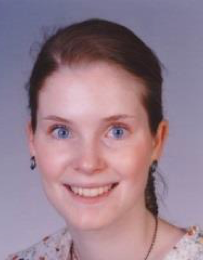 Ms Luise Göbel
Bauhaus-Universität Weimar, Weimar (DE)
STSM Topic:Experimental and analytical modeling of elastic and viscoelastic properties of polymer-modified concretes
Host: Bernhard Pichler , Vienna University of Technology, Vienna (AT)
Period: 18.07.2016 to 30.09.2016
Budget: 2200 Euro
Work Plan Summary:
Ms Luise Göbel
Bauhaus-Universität Weimar, Weimar (DE)
STSM Topic:Experimental and analytical modeling of elastic and viscoelastic properties of polymer-modified concretes
Host: Bernhard Pichler , Vienna University of Technology, Vienna (AT)
Period: 18.07.2016 to 30.09.2016
Budget: 2200 Euro
Work Plan Summary:
The objective of this STSM is the experimental as well as the analytical modelling of polymer-modified concrete (PCC). It aims at a better understanding of the elastic and viscoelastic properties of PCC since these properties differ significantly from standard concrete. A recently experimental testing procedure will be performed to investigate the elastic and viscoelastic properties of the polymer component as well as the elastic and viscoelastic properties of the compound material. By means of the experimental data, the micromechanical modelling of the mechanical behaviour of PCC can be carried out. These investigations make an important contribution to the general description of the elastic and viscoelastic properties of different types of PCC at different hydration stages. The improvement of prediction models for PCC represents an important step towards the use of this type of concrete for construction purposes and accelerates their implementation in guidelines. Methods for choosing the global ansatz functions and integration points will be investigated with respect to accuracy of the solution and the reachable computational speed-up.
10th STSM approved on 15th of Mai 2016
 Mr Vladyslav Omelchuk
Kyiv National University of Construction and Architecture, Kyiv (UA)
STSM Topic:Influence of chemical nature of admixtures on fresh and mechanical properties of mortars based on alkali activated cement
Host: Ye Guang, Delft University of Technology, Delft (NL)
Period: 01.07.2016 to 28.09.2016
Budget: 2500 Euro
Work Plan Summary:
Mr Vladyslav Omelchuk
Kyiv National University of Construction and Architecture, Kyiv (UA)
STSM Topic:Influence of chemical nature of admixtures on fresh and mechanical properties of mortars based on alkali activated cement
Host: Ye Guang, Delft University of Technology, Delft (NL)
Period: 01.07.2016 to 28.09.2016
Budget: 2500 Euro
Work Plan Summary:
Increased durability of mortars and concretes is achieved by providing a range of properties, formation of which starts at the level of viscoplastic system and continues in hardened material. Modern material science allows regulating such properties, including by use of chemical admixtures. In its turn, admixtures cause some extra issues concerning their influence on durability of modified materials. Aims of this STSM are to obtain experimental data of influence of chemical nature of admixtures on fresh and mechanical properties of highly flowable mortars based on alkali activated cement, which allows to predict durability and to regulate properties in normative documents. Determination of nature and degree of compatibility of cellulose ethers, redispersible polymer powders and surfactants (plasticizers) with alkali activated cement and their influence on fresh and mechanical properties of mortars, to be carried out at Delft University of Technology.
11th STSM approved on 15th of July 2016
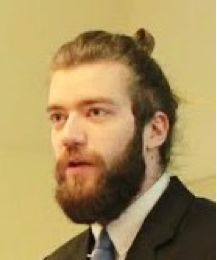 Dr Jérôme Carette
Université Libre de Bruxelles, Ixelles (BE)
STSM Topic:Monitoring and modelling of the water gradient in concrete submitted to drying/immersion cycles
Host: Farid Benboudjema, ENS Cachan, Cachan (FR)
Period: 29.06.2016 to 30.09.2016
Budget: 3380 Euro
Work Plan Summary:
Dr Jérôme Carette
Université Libre de Bruxelles, Ixelles (BE)
STSM Topic:Monitoring and modelling of the water gradient in concrete submitted to drying/immersion cycles
Host: Farid Benboudjema, ENS Cachan, Cachan (FR)
Period: 29.06.2016 to 30.09.2016
Budget: 3380 Euro
Work Plan Summary:
Research activities extend over 6 month. As the samples have already been cast and prepared, the tests can be started immediately and the simulation strategy can be developed within a few months. Three simultaneous experimental campaigns separately with water drying and uptake phenomena on one hand and the drying-imbibing coupling on the other hand.
12th STSM approved on 31st of August 2016
 Ms Lydia Matiaskova
Slovak University of Technology, Bratislava (SK)
STSM Topic:Macroscopic modeling of early age concrete members
Host: Dirk Schlicke, Graz University of Technology, Institute of Structural Concrete, Graz (AT)
Period: 01.09.2016 to 09.09.2016
Budget: 480 Euro
Work Plan Summary:
Ms Lydia Matiaskova
Slovak University of Technology, Bratislava (SK)
STSM Topic:Macroscopic modeling of early age concrete members
Host: Dirk Schlicke, Graz University of Technology, Institute of Structural Concrete, Graz (AT)
Period: 01.09.2016 to 09.09.2016
Budget: 480 Euro
Work Plan Summary:
The main aim of the short term stay at TU Graz is creating functional macroscopic calculation models of chosen critical structural details. Thus, the whole period will be spent by developing models for simulation of hardening-induced stresses as well as fundamentals on realistic assessment of associated crack risk. This would enable further studies on crack assessment and practical design tools. Of course, the final proposed solution will take into account the state of the art of multi-physical macroscopic calculation models with respect to the solution of the transient thermal and moisture field according to the hydration heat release and shrinkage as well as stiffness evolution and viscoelastic effects of the young concrete.
13th STSM approved on 14th of October 2016
 Mr Brice Delsaute
Université Libre de Bruxelles, Ixelles (BE)
STSM Topic:Influence of thermal variations on the development of early age properties of cement based materials
Host: Jean-Michel Torrenti, Institut français des sciences et technologies des transports, de l’aménagement et des réseaux – IFSTTAR, F-77447 Marne la Vallée Cedex 2 (FR)
Period: 01.11.2016 to 23.12.2016
Budget: 2000 Euro
Work Plan Summary:
Mr Brice Delsaute
Université Libre de Bruxelles, Ixelles (BE)
STSM Topic:Influence of thermal variations on the development of early age properties of cement based materials
Host: Jean-Michel Torrenti, Institut français des sciences et technologies des transports, de l’aménagement et des réseaux – IFSTTAR, F-77447 Marne la Vallée Cedex 2 (FR)
Period: 01.11.2016 to 23.12.2016
Budget: 2000 Euro
Work Plan Summary:
The subject of this STSM is a detailed investigation of the effect of realistic thermal variation on the development of the early age properties of several cement based materials. The study focuses more specifically on the evolution of the coefficient of thermal expansion, the autogenous strain and the viscoelastic properties. Four different compositions are studied: a reference concrete, an eco-concrete with 75% of cement substituted by slag and limestone filler, an UHPC and the so called Vercors concrete used for nuclear power plant. Based on the experimental measurements, the parameters of the models will be calibrated. From the comparison of the resulting model parameters, suggestions and restrictions for their general description can be derived. These investigations make an important contribution to the further development of models for the description of early age concrete properties which is an important step towards the general use of this type of models in engineering calculations and their implementation in standards and guidelines. COST Action TU1404 STSM Coordinator: Prof. Violeta Bokan Bosiljkov (violeta.bokan-bosiljkov@fgg.uni-lj.si)
14th STSM approved on 18th of December 2016
 Ms Karolina Hájková
CTU in Prague, Prague (CZ)
STSM Topic:Thermo-mechanical model
Host: Dirk Schlicke, TU Graz, Graz (AT)
Period: 01. 03. 2017 to 30. 04. 2017
Budget: 2500 Euros
Work Plan Summary:
Ms Karolina Hájková
CTU in Prague, Prague (CZ)
STSM Topic:Thermo-mechanical model
Host: Dirk Schlicke, TU Graz, Graz (AT)
Period: 01. 03. 2017 to 30. 04. 2017
Budget: 2500 Euros
Work Plan Summary:
The work at TU Graz aims at validation of complex thermo-mechanical material models on basis of macroscopic experiments as well as on the identification of important parameters for reliable computational prediction of hardening-induced cracking of concrete structures. Next to a thorough reanalysis of the recalculated restraining frame experiment, this includes also a sensitivity study with MPSDamMat material model on the input parameters of such calculations. All work is carried out in open-source OOFEM package which allows easy transition to other participants.
15th STSM approved on 13th of January 2017
 Ms Gili Lifshitz
Ben-Gurion University of the Negev, Beer-Sheva (IL)
STSM Topic:Upscaling Micro Chemical and Mechanical Models to obtain the LDPM Parameters
Host: Klaas van Breugel, Delft University of Technology: TU Delft , Delft (NL)
Period: 03. 02. 2017 to 15. 03 2017
Budget: 2000 Euros
Work Plan Summary:
Ms Gili Lifshitz
Ben-Gurion University of the Negev, Beer-Sheva (IL)
STSM Topic:Upscaling Micro Chemical and Mechanical Models to obtain the LDPM Parameters
Host: Klaas van Breugel, Delft University of Technology: TU Delft , Delft (NL)
Period: 03. 02. 2017 to 15. 03 2017
Budget: 2000 Euros
Work Plan Summary:
The objective of the proposed research is to obtain the fifteen parameters required for input into the LDPM, from different simulation tests on the mortar scale. The lower scale models have some shortcomings with several simulation tests and do not describe the failure criterion correctly as an input for the LDPM. Therefore, the lower scale models need to be adjusted in order to capture these failure modes. The simulation tests that will be consider during the visit are: o Hydrostatic test o Combined shear and tension loads o Combined shear and compression loads Step 1 - The simulation program is based on the Timoshenko theory and efforts will be made at BGU to study the failure criteria, with the aim of identifying the incorrect input parameters and achieve an effective simulation. This step is in a preliminary stage at BGU. Step 2 - Modification of the sub-routine in order to overcome the simulation difficulties that prevent full execution of the model. (at TU-Delft). Step 3 - The professional expertise of Delft University regarding the numerical simulations of the lower scales will be instrumental in bridging between scales and will enable improvements to be made to the formulation of some failure modes of the lower scale. (at TU-Delft). Step 4 - Bridging between the mortar, lattice model, concrete, and LDPM by using the enhanced simulation tests. The LDPM will be simulated using the parameters obtained from these simulations, in order to evaluate the mechanical performance of concrete at the mesoscale. (at TU-Delft) Step 5 - Validating and calibrating the numerical simulation with experimental results, using uniaxial compression tests of concrete specimens (the validation will take place at TU-Delft the experimental results are already obtained). Step 6 - Publishing articles. This step can take place at both institutions depending on the time remaining. The completion of this research will provide an extremely powerful methodology for industrial applications, mainly for cement producers, as well as for designers of specific structures, worldwide.
16th STSM approved on 30th of March 2017
 Ms Tuanny Cajuhi
Technische Universität Braunschweig, Braunschweig (DE)
STSM Topic:Experimental tests on cracking induced by drying and autogenous shrinkage for validation of numerical framework
Host: Pietro Lura, Empa, Dübendorf (CH)
Period: 07. 08. 2017 to 27. 10. 2017
Budget: 2500 Euros
Work Plan Summary:
Ms Tuanny Cajuhi
Technische Universität Braunschweig, Braunschweig (DE)
STSM Topic:Experimental tests on cracking induced by drying and autogenous shrinkage for validation of numerical framework
Host: Pietro Lura, Empa, Dübendorf (CH)
Period: 07. 08. 2017 to 27. 10. 2017
Budget: 2500 Euros
Work Plan Summary:
First, an initial training with the testing machines to be used during the stay is planned. Tests for determination of the mechanical properties, e.g. Young’s modulus, Poisson’s ratio, tensile strength, fracture energy and creep behavior in compression, and hygric properties, e.g. sorption isotherms, are carried out.
A low water-to-cement ratio mortar that self-desiccates rapidly during hardening is investigated in terms of drying shrinkage and autogenous shrinkage. The experimental tests in this part of the work account for the restraint type (internal, external) and the extent of restraint in the specimen, i.e. the mechanical boundary conditions can be varied in a pre-defined manner. The specimen is also investigated with X-ray microtomography, so that the evolution of the crack during testing can be evaluated non-destructively on the same specimens.
The results are organized in form of a report containing a detailed test description, obtained material data and curves as well as the microtomography results.
17th STSM approved on 17st of Mai 2017
 Mr Christoph Pohl
Bundesanstalt für Materialforschung und -prüfung, Berlin (DE)
STSM Topic:Hygro-thermo-mechanical modeling of cement-based materials
Host: VÍt Šmilauer, Czech Technical University in Prague, Prague (CZ)
Period: 02. 10. 2017 to 30. 11. 2017
Budget: 2500 Euros
Work Plan Summary:
Mr Christoph Pohl
Bundesanstalt für Materialforschung und -prüfung, Berlin (DE)
STSM Topic:Hygro-thermo-mechanical modeling of cement-based materials
Host: VÍt Šmilauer, Czech Technical University in Prague, Prague (CZ)
Period: 02. 10. 2017 to 30. 11. 2017
Budget: 2500 Euros
Work Plan Summary:
The complex behaviour of cement-based materials at elevated temperatures, including shrinkage and creep, is difficult to model. Using complex nonlinear formulations for the mechanical behaviour without tracking the diffusion of temperature and moisture in the cement matrix leads to limited applicability to new mixes or different length scales.
The first work package includes evaluating approaches to modeling the phase transition occuring during supercritical moisture transport in cementious materials with the help of the researchers at CVUT. The next step is to implement one model using the finite element method, which necessarily includes verifying the solution procedure.
Coupling the newly implemented moisture transport model to existing temperature and damage models is the main problem of the second task. At the end, projecting the continuum values back onto the global behaviour of a concrete specimen will show whether the resulting model exhibits the nonlinear strain as a function of moisture and temperature, while using only a linear thermal expansion model.
18th STSM approved on 11th of August 2017
 Dr Jose Vicente Fuente
Universitat Politechnica De Valencia (ES)
STSM Topic:Ultrasonic numerical simulation by using microstructural images for the cement based materials assessment
Host: Dr Sreejith Nanukuttan, Queen`s University Belfast, Belfast (UK)
Period: 20. 08. 2017 to 10. 09. 2017
Budget: 2500 Euros
Work Plan Summary:
Dr Jose Vicente Fuente
Universitat Politechnica De Valencia (ES)
STSM Topic:Ultrasonic numerical simulation by using microstructural images for the cement based materials assessment
Host: Dr Sreejith Nanukuttan, Queen`s University Belfast, Belfast (UK)
Period: 20. 08. 2017 to 10. 09. 2017
Budget: 2500 Euros
Work Plan Summary:
The aim of this STSM is to develop a set of ultrasonic numerical simulations to be applied on a wide range of representative microstructure images. It will help to identify the most suitable ultrasonic parameter (attenuation or velocity) and their variation ranges on common microstructures of cement paste and mortars.
This will be achieved by completing the following objectives: - To generate microstructure of cement paste and mortars by simulation tools using Matlab uniform and Gaussian functions. The output will be microstructures that will be the basis for the numerical simulation. - To develop the numerical simulation using different kinds of ultrasonic pulse to analysis the attenuation-dependence of the pulse for the wide range of microstructures. - Digital signal processing of simulated waveforms to extract most relevant ultrasonic parameters in the time and frequency domain. - To integrate the findings from the previous objectives to develop a refined methodology for microstructural characterization of CBM using ultrasonic pulse velocity. COST Action TU1404 STSM Coordinator: Prof. Violeta Bokan Bosiljkov (violeta.bokan-bosiljkov@fgg.uni-lj.si)19th STSM approved on 4th of September 2017
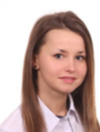 Aneta Žmij
Silesian University of Technology (PL)
STSM Topic:Numerical simulation of massive RC foundations: accounting for non-conventionally considered phenomena
Host: Miguel Azenha, University of Minho (PT)
Period: 29. 01. 2018 to 25. 03. 2018
Budget: 2500 Euros
Work Plan Summary:
Aneta Žmij
Silesian University of Technology (PL)
STSM Topic:Numerical simulation of massive RC foundations: accounting for non-conventionally considered phenomena
Host: Miguel Azenha, University of Minho (PT)
Period: 29. 01. 2018 to 25. 03. 2018
Budget: 2500 Euros
Work Plan Summary:
The mission presented herein aims to perform the numerical simulation of massive RC foundations: accounting for non-conventionally considered phenomena, that are normally simplified (or even disregarded) in the engineering practice, as well as during research-related simulations and design. The research of this STSM intends to provide clear answers about the feasibility of such simplifications, by evaluating the phenomena with all the inherent complexities at the macro-scale. Therefore it is necessary to account for the full thermo-hygro-mechanical model to be directly considered and evaluated.
The range of tasks realized within the mission is directly related to interests and field of studies of the Applicant. The performed numerical simulations accounting for non-conventionally considered phenomena is the way of getting new experiences and create the path for further developments. Furthermore the participation in the mission is the opportunity to work in the international scientific environment, that creates the host institution holding a significant and internationally recognized know-how on structural analysis based on thermo-hygro-mechanical modeling.
This STSM creates opportunity to obtain extensive information on the consequences of directly consideration several phenomena that are normally simplified (or even ignored) in research and design practices. A full 3D multi-physical framework for simulation (thermo-hygro-mechanical modelling) will be applied for such concern. A direct impact is therefore expectable in the interplay between the research and the practicing communities. Even though the STSM is centered on topics related to WG2 (Simulation), an important output towards WG3 is also expectable.
The work will be based on a reference case to be selected (real construction), which will be extensively studied with the 3D numerical framework for thermo-hygro-mechanical simulation available at the University of Minho (combined MATLAB software and DIANA).
20th STSM approved on 04th of October 2017
 Zhenming Li
Microlab, Faculty of Civil Engineering and Geoscience, Delft University of Technology (NL)
STSM Topic:Mitigating the autogenous shrinkage of alkali activated fly ash and slag concrete with internal curing
Host: Pietro Lura, Concrete/Construction Chemistry Laboratory, EMPA (CH)
Period: 08. 01. 2018 to 07. 04. 2018
Budget: 2500 Euros
Aim & motivation:
Zhenming Li
Microlab, Faculty of Civil Engineering and Geoscience, Delft University of Technology (NL)
STSM Topic:Mitigating the autogenous shrinkage of alkali activated fly ash and slag concrete with internal curing
Host: Pietro Lura, Concrete/Construction Chemistry Laboratory, EMPA (CH)
Period: 08. 01. 2018 to 07. 04. 2018
Budget: 2500 Euros
Aim & motivation:
To gain knowledge and experience is my main motivation to apply for the STSM. My PhD research is focused on the autogenous shrinkage property of geopolymers (also called alkali activated materials). The host supervisors Dr. Mateusz Wyrzykowski and Prof. Pietro Lura are experts in experimental measuring and modelling of shrinkage of cement based materials, and in addition they have a long experience about internal curing, in particular with SAP. Hence, the communication with them will surely increase my knowledge. The Concrete/Construction Chemistry Lab of Empa is a well-quipped laboratory, leading in particular in the area of shrinkage and microstructure development of cement-based materials. Visiting the lab and living in Switzerland which has different culture from the Netherlands are all amazing experiences in my life. One important part of my PhD research is the autogenous shrinkage mechanisms of geopolymers based on fly ash and slag. Through this STSM, I will utilize the experimental facilities in EMPA to study the role of capillary pressure in autogenous shrinkage of geopolymers and will explore the shrinkage mitigating methods for geopolymer concrete.
One aim of the COST Action TU1404 is to develop new products for the European market, and geopolymer has a great potential to be one of them, providing the construction sector a sustainable alternative to traditional Portland cement. Autogenous shrinkage is an important engineering property which contributes to early age cracking in high-performance cement-based materials. The objective of this visiting research is to better understand the autogenous shrinkage property of geopolymers based on fly ash and slag. The research results to be obtained by the collaboration between the Geocon group from TUD and Concrete/Construction Chemistry Lab of Empa will surely contribute to a wider application of alkali activated materials in Europe. The strengthened network between the two institutes by this mission will also help to initiate further joint research activities in the field of construction materials in the future, which meets the general goals of the COST Action TU1404.
21th STSM approved on 17th of October 2017
 Dr Fragkoulis Kanavaris
Queen’s University of Belfast, School of Natural and Built Environment (UK)
Host: Miguel Azenha, University of Minho (PT)
Period: 01. 11. 2017 to 11. 12. 2017
Budget: 2500 Euros
Aims and objectives:
Dr Fragkoulis Kanavaris
Queen’s University of Belfast, School of Natural and Built Environment (UK)
Host: Miguel Azenha, University of Minho (PT)
Period: 01. 11. 2017 to 11. 12. 2017
Budget: 2500 Euros
Aims and objectives:
1. Conduct extensive literature review on the advancements on methods used to assess cracking sensitivity of cement based materials, identify advantages and limitations of each method and write a state-of-the-art review which will be submitted for publication in a renowned journal.
2. Develop numerical simulation skills to model the thermo-mechanical behaviour of cement based materials by conducting preliminary simulations of the ring test. Foreseen results:1) A full draft of the state-of-the-art review paper for cracking tests and
2) Preliminary numerical models of the ring test which will serve as a basis for future publication.
Dissemination of results:1) Submitting the state-of-the-art review on cracking tests in a peer-reviewed journal soon after the end of the proposed STSM. Expected journals for submission could be ‘Materials & Structures’ or ‘Cement & Concrete Composites’.
2) Publishing the results obtained from the preliminary numerical analysis of the ring test in the future after further improvements and additions. Expectable submission to the final conference of COST Action, at least. However, a Journal paper submission is not at all ruled out.
22th STSM approved on 15th of January 2018
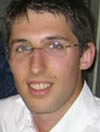 Dr Emmanuel Roziere
Ecole Centrale De Nantes, Nantes (FR)
STSM Topic:Early-age behaviour of concrete under restrained shrinkage.
Host: Terje Kanstad, NTNU Trondheim (NO)
Period: 12. 03. 2018 to 15. 04. 2018
Budget: 2500 Euros
Aims and objectives:
Dr Emmanuel Roziere
Ecole Centrale De Nantes, Nantes (FR)
STSM Topic:Early-age behaviour of concrete under restrained shrinkage.
Host: Terje Kanstad, NTNU Trondheim (NO)
Period: 12. 03. 2018 to 15. 04. 2018
Budget: 2500 Euros
Aims and objectives:
At early age, the physical, chemical, and mechanical properties of cement-based materials undergo rapid changes. Thermal cracking and shrinkage-induced cracking depend on several properties of cement-based materials, such as shrinkage, strength, modulus of elasticity, Poisson’s ratio, creep, thermal properties, and adiabatic temperature rise. The evolution of these properties is coupled and previous studies have showed that the prediction of these couplings from independent measurements in controlled conditions is not obvious. For instance, the influence of temperature on shrinkage and creep, and the effect of restraint and mechanical loading on the development of mechanical properties are not fully understood. This challenges both the models that could be used to predict the evolution of damage and cracking potential, and the experimental procedures that are needed to determine the input parameters. The validation of such combined experimental and modelling strategies has raised the need for experimental setup that would allow taking into account the main couplings while controlling some internal/external parameters such as temperature, relative humidity, and restraint. Temperature Stress Testing Machines (TSTM) have been developed since the 1990s to address this issue. TSTM tests allow the measurement of deformations from the casting of concrete specimen, in controlled temperature conditions. The specimen can move freely until a deformation threshold is reached. An additional load is then applied to cancel the deformation. As a consequence a TSTM device can provide restraint by applying loads, in tension or compression. The determination of stresses and strains at each increase of load allows the assessment of elastic modulus. The comparison between cumulated stresses and tensile strength provide the evolution of the risk of cracking.
COST Action TU 1404 gives a special attention to the problem of analyzing serviceability under the combined effect of imposed deformations (namely, due to thermal and hygral effects) together with applied loads, with due account for viscoelasticity and cracking effects. Thus restrained shrinkage tests directly contribute to the objective. The Action also aims at improving and disseminate non-standardized procedures and models. TSTM testing is not meant to be standardized however the data provided by RRT+ are particularly useful to achieve the goals of COST Action TU1404. First it shows the need for advanced testing to understand the complex and coupled phenomena occurring in cement-based materials at early-age. Restrained shrinkage tests highlight the parameters that need to be taken into account to assess the cracking potential, thus the test procedures that need to be standardized or developed. Moreover these data offer new opportunities to simulation/predictive models both in terms of validation of modelling assumption/strategies and opportunities for the validation of simulation results.
23th STSM approved on 12th of February 2018
 Dr Alexander Mezhov
Technion – Israel Institute of Technology, Haifa (IL)
STSM Topic: Aspects of activated fly ash: A comparative study of different mechanical treatments.
Host: Dietmar Stephan, Technische Universität Berlin (DE)
Period: 02. 03. 2018 to 17. 03. 2018
Budget: 2500 Euros
Aims and objectives:
Dr Alexander Mezhov
Technion – Israel Institute of Technology, Haifa (IL)
STSM Topic: Aspects of activated fly ash: A comparative study of different mechanical treatments.
Host: Dietmar Stephan, Technische Universität Berlin (DE)
Period: 02. 03. 2018 to 17. 03. 2018
Budget: 2500 Euros
Aims and objectives:
My motivation to apply for the STSM is the possibility to expand my theoretical and practical knowledge of the methods and technologies related to mechanical activation of fly ash. The topic of my PhD-thesis was the application of mechanochemical theory for recycling of asbestos containing waste, and I am interested in further study in this field. At present, I am involved in research dealing with recycling of different types of mineral and organic waste for using in the construction industry. One of the important subjects is a recovery of valuable materials from the waste. This research is conducted in the team led by Prof. Konstantin Kovler in the National Building Research Institute, Faculty of Civil and Environmental Engineering, Technion – Israel Institute of Technology. The common feature of the research projects I am involved in this application of mechanochemistry. To the best of my knowledge, the Host Institution (TU Berlin) has the necessary equipment to carry out such research. Subsequently, the further exchange of knowledge with the colleagues from TU Berlin and the advance in the international cooperation with leading research groups would be extremely useful.
According to the official theme of COST: "Towards the next generation of standards for service life of cement-based materials and structures", the current research will broaden knowledge in the field of activation and application of fly ash as a part of blended binders. Based on the results of the research it is possible to develop new or improve current recommendations and standards for usage of fly ash relating to mechanochemistry, which has not happened thus far.
24th STSM approved on 20th of February 2018
 Niloufar Zabihi
Istanbul Technical University, Istanbul (TR)
STSM Topic: Development of elasticity modulus of polymer-modified cement mixtures incorporating colloidal nano silica using EMM-ARM method
Host: Miguel Azenha, University of Minho (PT)
Period: 26. 02. 2018 to 01. 04. 2018
Budget: 1100 Euros
Aims and objectives:
Niloufar Zabihi
Istanbul Technical University, Istanbul (TR)
STSM Topic: Development of elasticity modulus of polymer-modified cement mixtures incorporating colloidal nano silica using EMM-ARM method
Host: Miguel Azenha, University of Minho (PT)
Period: 26. 02. 2018 to 01. 04. 2018
Budget: 1100 Euros
Aims and objectives:
Knowing about the different effects of nano silica and polymers on the hardening process of cementitious mixtures, in this study, it is aimed to investigate the development in modulus of elasticity (and so the hardening procedure) of the mixtures, incorporating both of the admixtures.
The incorporation of nano silica and polymeric materials is a novel idea based on the fact that each of these materials have certain effects on the plain cement mixtures. By incorporating them together, it is aimed to examine whether there is an interaction between them or not, and if nano silica can be used to overcome the certain weaknesses in polymer-modified cement mixtures. In particular, in this short term mission, development of modulus of elasticity is examined, when we have both nano silica and polymeric materials. As aforementioned, having polymers tends to reduce the modulus of elasticity, while nano silica improves it. Testing the development of elasticity modulus from the early ages would provide a unique vision on both the effect of each admixtures, and the possible interaction between them.
COST Action Workgroup 1 is focused on testing of cement-based materials and better understanding their properties. This STSM combines know-how of one institution with strong background in experimental innovation at early ages (UMinho, particularly through EMM-ARM) and an institution with significant background in the experimental study of the blended effect of nano-silica and polymers in cement based materials (with significant complementary characterization of the same mixtures made beforehand). This study could help better understanding the ‘competing effects’ of these two materials in cement paste and describe ways in which the combination could of both could be used to produce lower permeability cementitious materials (added durability) without reducing hydration kinetics in a significant manner. This better understanding of material behavior is definitely a contribution towards the aims of COST Action TU1404.
